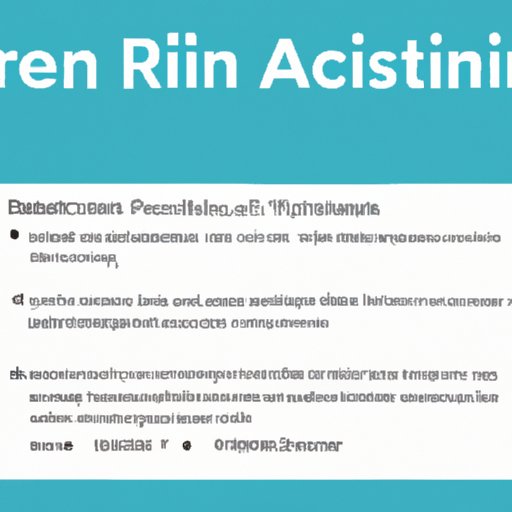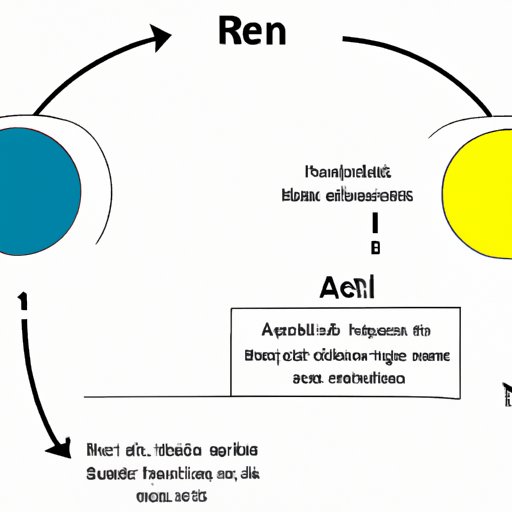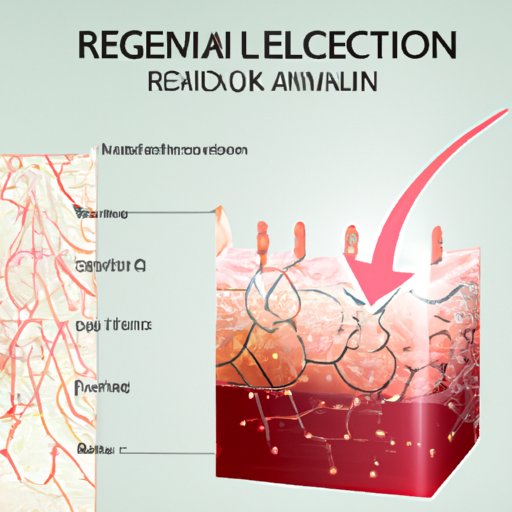Introduction
Retin A is a widely-used topical treatment for improving the appearance of the skin. It has been around for decades, and is a trusted and proven solution for treating a variety of skin conditions, including wrinkles, acne, and dark spots. But how does Retin A work? In this article, we will take an in-depth look at the science behind Retin A and explore how it works to improve the complexion of the skin.
Exploring the Science Behind Retin A: How Does It Work?
The first step to understanding how Retin A works is to understand what it is and what its main mechanisms of action are. Retin A is a synthetic form of Vitamin A, also known as tretinoin. It is a powerful antioxidant that helps to reduce inflammation, stimulate cell turnover, and encourage collagen production. By doing so, Retin A can help to improve the complexion of the skin and reduce signs of aging, such as wrinkles and fine lines.
Understanding Retin A’s Impact on Skin: An In-Depth Look
Now that we know the basics of Retin A, let’s take a closer look at how it affects the skin. When applied topically, Retin A works by speeding up the rate of cell turnover. This helps to slough off dead skin cells and reveal brighter, fresher skin underneath. Additionally, Retin A stimulates the production of collagen, which is the protein responsible for providing structure and support to the skin. As a result, Retin A can help to reduce the appearance of wrinkles and fine lines.
The Benefits of Retin A: How It Helps Improve Complexion
In addition to reducing wrinkles and fine lines, Retin A can also be used to treat acne and other skin conditions. Retin A is effective in treating acne due to its ability to reduce inflammation and unclog pores. This helps to clear up blemishes and prevent future breakouts. Additionally, Retin A can help to even out skin tone and reduce the appearance of dark spots.

A Comprehensive Guide to Retin A: What You Need to Know
When using Retin A, there are some important tips to keep in mind to ensure safe and effective use. It is important to start with a lower concentration to allow your skin to adjust. Additionally, Retin A should be used sparingly and only at night, as it makes the skin more sensitive to sunlight. Lastly, it is important to apply a moisturizer after using Retin A to prevent dryness and irritation.
When using Retin A, you can expect to see results within a few weeks. However, it is important to remember that Retin A can take several months to produce optimal results. Common side effects of Retin A include redness, flaking, and dryness. If these symptoms persist, it is important to speak to your doctor or dermatologist.

Retin A: A Closer Look at Its Mechanism of Action
Now that we have explored the basics of Retin A, let’s take a closer look at its mechanism of action. Retin A works by interacting with proteins in the skin, such as keratinocytes, which are responsible for producing collagen. By stimulating these proteins, Retin A helps to increase cell turnover and promote collagen production. This helps to reduce wrinkles and fine lines, as well as treat acne and other skin conditions.
Conclusion
To conclude, we have explored how Retin A works and the various benefits it can offer for improving the complexion of the skin. Retin A is a powerful antioxidant that helps to reduce inflammation, stimulate cell turnover, and encourage collagen production. Additionally, Retin A can help to reduce wrinkles and fine lines, as well as treat acne and other skin conditions. When using Retin A, it is important to follow safety precautions and use it sparingly to achieve optimal results.
(Note: Is this article not meeting your expectations? Do you have knowledge or insights to share? Unlock new opportunities and expand your reach by joining our authors team. Click Registration to join us and share your expertise with our readers.)
